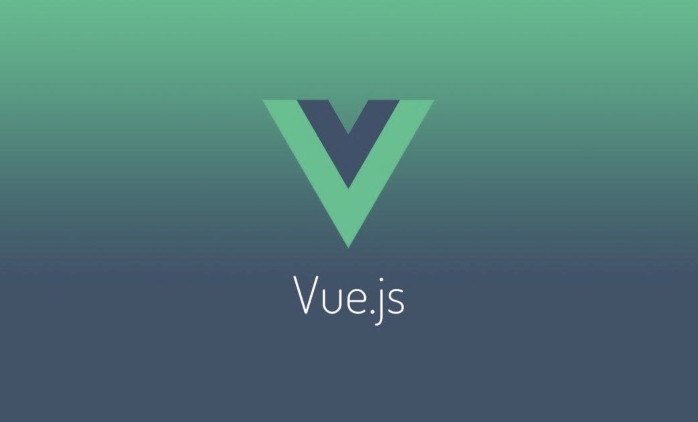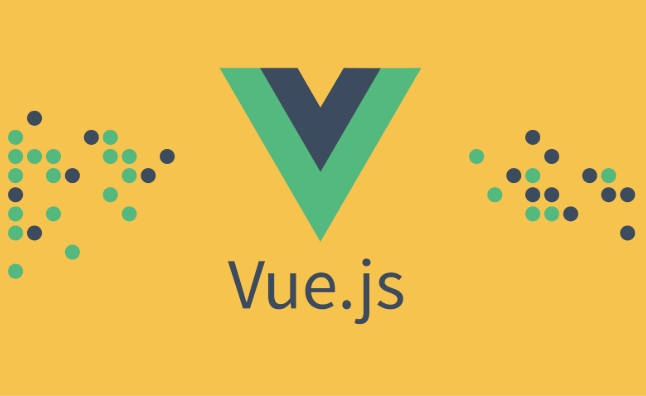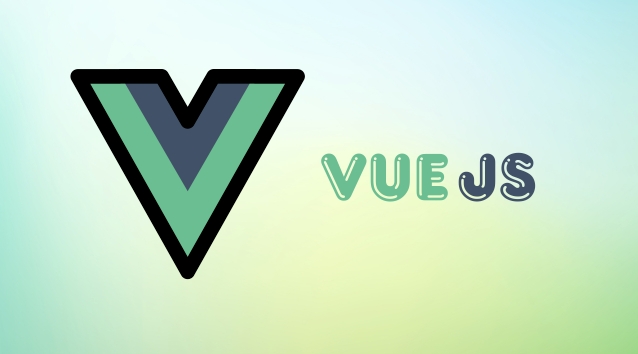The way to create a Vue 3 TypeScript project using Vite is to execute the command npm create vite@latest my-vue-ts-app -- --template vue-ts, then install the dependency and run the project. 1. After creating the project, use

The combination of TypeScript and Vue has become very mature, especially in Vue 3, and the official support for TypeScript is more friendly. If you are already familiar with Vue, want to introduce TypeScript into your project, or plan to build a Vue project with TypeScript from scratch, it is actually not complicated.

Create TypeScript Projects with Vue 3 Vite
The easiest way is to create a Vue TypeScript project through Vite. Vite provides templates that are out of the box, and the configuration has been handled for you.
Execute the command:

npm create vite@latest my-vue-ts-app -- --template vue-ts
This creates a Vue and TypeScript-based project. After entering the directory, install the dependencies and run:
cd my-vue-ts-app npm install npm run dev
This way you have a Vue project that supports TypeScript. Vite will automatically process the compilation of .ts and .vue files.

Using TypeScript in Components
Vue 3 supports the use of <script setup> syntax, and it is very natural to combine TypeScript. You can use type annotations directly in defineProps :
<script setup lang="ts">
interface Props {
title: string
count?: number
}
const props = defineProps<Props>()
</script>If you are using the option API, you can also write it like this:
export default {
props: {
title: String as PropType<string>,
count: Number
}
} Remember to introduce PropType to provide type information for complex types:
import type { PropType } from 'vue'Type-safe responsive data
Type annotations can also be added when using ref and reactive :
import { ref } from 'vue'
const count = ref<number>(0)Or automatic derivation:
const name = ref('Alice') // The type is automatically deduced to string
If you are storing objects or arrays, it is recommended to declare the type explicitly, which can avoid the problem of inaccurate type derivation.
Type support for routing and state management
- Vue Router : When defining routing configuration, you can use the TypeScript interface to define the types of fields such as meta, params, etc.
- Pinia : Pinia officially fully supports TypeScript. When defining a store, you can directly use generics or interfaces to constrain the type of state.
For example:
import { defineStore } from 'pinia'
interface User {
id: number
name: string
}
export const useUserStore = defineStore('user', {
state: (): { user: User | null } => ({
user: null
})
})This method allows you to get full type prompts and checks when calling the store.
Basically that's it. TypeScript integration in Vue projects is already very smooth, and can get good type support whether it is component communication, state management or routing configuration. You just need to select a template when creating a project and then use type annotations reasonably in the code to enjoy the benefits of type safety.
The above is the detailed content of How do you use TypeScript with Vue?. For more information, please follow other related articles on the PHP Chinese website!

Hot AI Tools

Undress AI Tool
Undress images for free

Undresser.AI Undress
AI-powered app for creating realistic nude photos

AI Clothes Remover
Online AI tool for removing clothes from photos.

Clothoff.io
AI clothes remover

Video Face Swap
Swap faces in any video effortlessly with our completely free AI face swap tool!

Hot Article

Hot Tools

Notepad++7.3.1
Easy-to-use and free code editor

SublimeText3 Chinese version
Chinese version, very easy to use

Zend Studio 13.0.1
Powerful PHP integrated development environment

Dreamweaver CS6
Visual web development tools

SublimeText3 Mac version
God-level code editing software (SublimeText3)
 What is headless UI in Vue?
Jul 08, 2025 am 01:38 AM
What is headless UI in Vue?
Jul 08, 2025 am 01:38 AM
HeadlessUIinVue refers to a library of UI components that provide no preset styles and only contains core logic and behavior. Its features include: 1. No style restrictions, developers can customize the design; 2. Focus on barrier-free and interactive logic, such as keyboard navigation, state management, etc.; 3. Support Vue framework integration, exposing the control interface through combinable functions or components. Reasons for use include: maintaining design consistency, built-in accessibility, strong component reusability, and lightweight library size. In practical applications, developers need to write HTML and CSS themselves. For example, when building a drop-down menu, the library handles state and interaction, while developers decide on visual presentation. Mainstream libraries include HeadlessUI and RadixVue for TailwindLabs, suitable for
 How to watch nested properties in Vue 3?
Jul 07, 2025 am 12:51 AM
How to watch nested properties in Vue 3?
Jul 07, 2025 am 12:51 AM
In Vue3, there are three ways to monitor nested properties using the watch function: 1. Use the getter function to accurately monitor specific nested paths, such as watch(()=>someObject.nested.property,callback); 2. Add the {deep:true} option to deeply monitor changes within the entire object, which is suitable for situations where the structure is complex and does not care about which property changes; 3. Return an array in the getter to listen to multiple nested values ??at the same time, which can be used in combination with deep:true; in addition, if ref is used, the nested properties in its .value need to be tracked through getter.
 How to build a component library with Vue?
Jul 10, 2025 pm 12:14 PM
How to build a component library with Vue?
Jul 10, 2025 pm 12:14 PM
Building a Vue component library requires designing the structure around the business scenario and following the complete process of development, testing and release. 1. The structural design should be classified according to functional modules, including basic components, layout components and business components; 2. Use SCSS or CSS variables to unify the theme and style; 3. Unify the naming specifications and introduce ESLint and Prettier to ensure the consistent code style; 4. Display the usage of components on the supporting document site; 5. Use Vite and other tools to package as NPM packages and configure rollupOptions; 6. Follow the semver specification to manage versions and changelogs when publishing.
 Key differences between Vue 2 and Vue 3?
Jul 09, 2025 am 01:29 AM
Key differences between Vue 2 and Vue 3?
Jul 09, 2025 am 01:29 AM
Vue3 has improved in many key aspects compared to Vue2. 1.Composition API provides a more flexible logical organization method, allowing centralized management of related logic, while still supporting Vue2's Options API; 2. Better performance and smaller package size, the core library is reduced by about 30%, the rendering speed is faster and supports better tree shake optimization; 3. The responsive system uses ES6Proxy to solve the problem of unable to automatically track attribute addition and deletion in Vue2, making the responsive mechanism more natural and consistent; 4. Built-in better support for TypeScript, support multiple node fragments and custom renderer API, improving flexibility and future adaptability. Overall, Vue3 is a smooth upgrade to Vue2,
 Benefits of using ?
Jul 08, 2025 am 12:20 AM
Benefits of using ?
Jul 08, 2025 am 12:20 AM
? in regular expressions are used to convert greedy matches to non-greedy, achieving more accurate matches. 1. It makes the content as little as possible to match as little as possible to avoid mismatch across tags or fields; 2. It is often used in scenarios such as HTML parsing, log analysis, URL extraction, etc. that require precise control of the scope; 3. When using it, it is necessary to note that not all quantifiers are applicable. Some tools need to manually enable non-greedy mode, and complex structures need to be combined with grouping and assertions to ensure accuracy. Mastering this technique can significantly improve text processing efficiency.
 Free entrance to Vue finished product resources website. Complete Vue finished product is permanently viewed online
Jul 23, 2025 pm 12:39 PM
Free entrance to Vue finished product resources website. Complete Vue finished product is permanently viewed online
Jul 23, 2025 pm 12:39 PM
This article has selected a series of top-level finished product resource websites for Vue developers and learners. Through these platforms, you can browse, learn, and even reuse massive high-quality Vue complete projects online for free, thereby quickly improving your development skills and project practice capabilities.
 What is CORS and how does it affect Vue development?
Jul 07, 2025 am 12:11 AM
What is CORS and how does it affect Vue development?
Jul 07, 2025 am 12:11 AM
CORSissuesinVueoccurduetothebrowser'ssame-originpolicywhenthefrontendandbackenddomainsdiffer.Duringdevelopment,configureaproxyinvue.config.jstoredirectAPIrequeststhroughthedevserver.Inproduction,ensurethebackendsetsproperCORSheaders,allowingspecifico
 How to use filters in Vue 2?
Jul 06, 2025 am 01:07 AM
How to use filters in Vue 2?
Jul 06, 2025 am 01:07 AM
The method of defining and using filters in Vue2 is as follows: First, the filter can be defined locally or globally. The local filter can be declared through filters object in the component, and the global filter is registered with Vue.filter() in the entry file; secondly, the pipe character |, such as {{message|capitalize}} is used when calling; secondly, the filter can pass parameters, the first parameter is the value before the pipeline, and the rest are customized parameters, such as {{price|formatCurrency('$')}}; multiple filters can also be connected in series for chain processing, such as {{text|lowercase|capitalize}}; but be careful not to use in v-model






